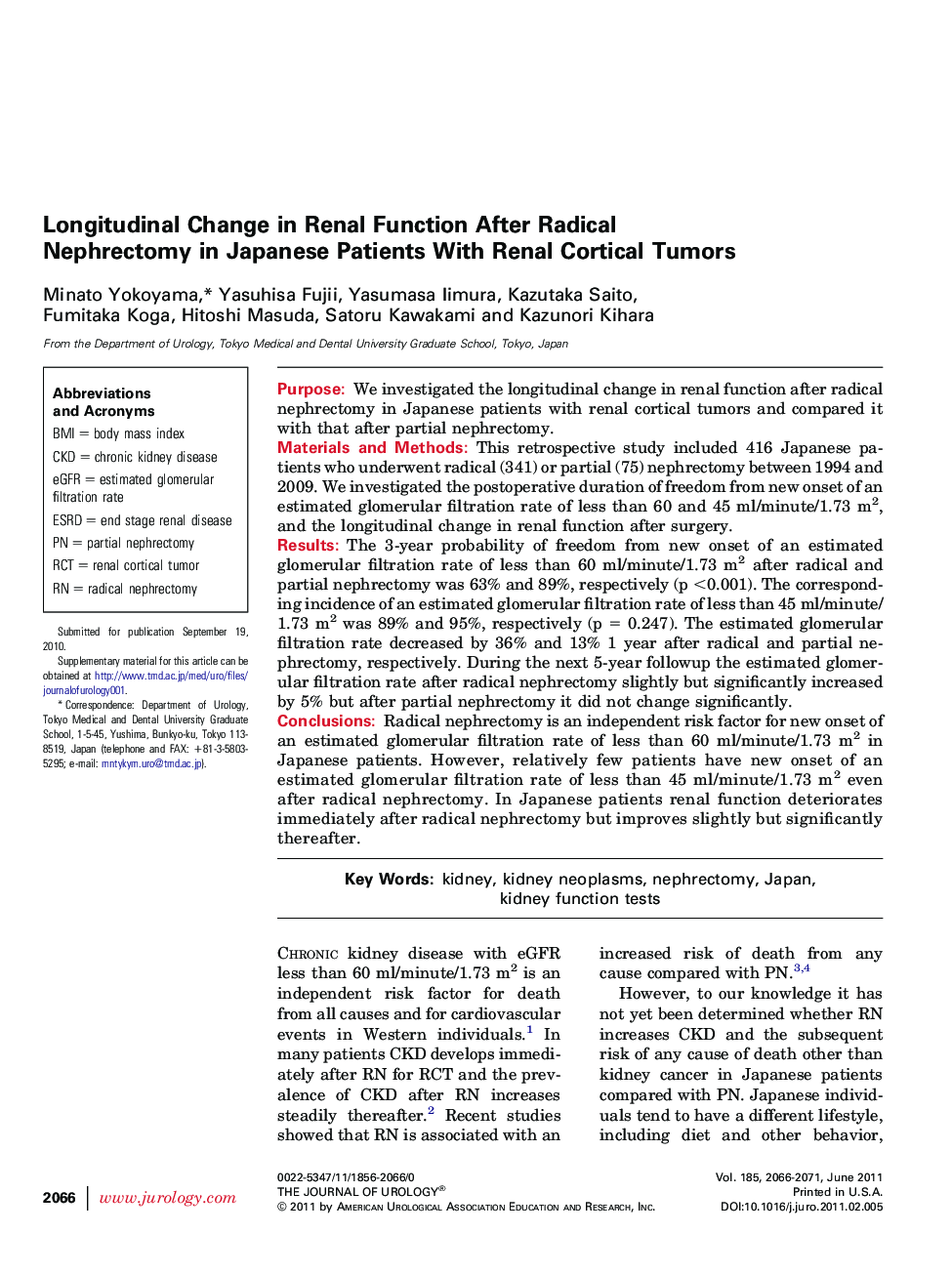| Article ID | Journal | Published Year | Pages | File Type |
|---|---|---|---|---|
| 3869778 | The Journal of Urology | 2011 | 6 Pages |
PurposeWe investigated the longitudinal change in renal function after radical nephrectomy in Japanese patients with renal cortical tumors and compared it with that after partial nephrectomy.Materials and MethodsThis retrospective study included 416 Japanese patients who underwent radical (341) or partial (75) nephrectomy between 1994 and 2009. We investigated the postoperative duration of freedom from new onset of an estimated glomerular filtration rate of less than 60 and 45 ml/minute/1.73 m2, and the longitudinal change in renal function after surgery.ResultsThe 3-year probability of freedom from new onset of an estimated glomerular filtration rate of less than 60 ml/minute/1.73 m2 after radical and partial nephrectomy was 63% and 89%, respectively (p <0.001). The corresponding incidence of an estimated glomerular filtration rate of less than 45 ml/minute/1.73 m2 was 89% and 95%, respectively (p = 0.247). The estimated glomerular filtration rate decreased by 36% and 13% 1 year after radical and partial nephrectomy, respectively. During the next 5-year followup the estimated glomerular filtration rate after radical nephrectomy slightly but significantly increased by 5% but after partial nephrectomy it did not change significantly.ConclusionsRadical nephrectomy is an independent risk factor for new onset of an estimated glomerular filtration rate of less than 60 ml/minute/1.73 m2 in Japanese patients. However, relatively few patients have new onset of an estimated glomerular filtration rate of less than 45 ml/minute/1.73 m2 even after radical nephrectomy. In Japanese patients renal function deteriorates immediately after radical nephrectomy but improves slightly but significantly thereafter.
